How to build an air conditioner route: communications device specifics
It is difficult to imagine modern comfortable housing without an air conditioning system. Agree that it is not enough just to purchase equipment with the appropriate parameters, but you also need to know how to lay the air conditioner path for its normal operation.
Installing an air conditioner and split systems has ceased to be a rarity, they are found in almost every home. A correctly laid track will ensure the reliability of the connection of elements and ensure the most efficient operation of the equipment, significantly extending its life.
We will understand all the intricacies of laying the route and the nuances of the work. Consider tracing methods that allow you to save the design of the room even when the work is done after finishing repairs.
The content of the article:
What is an air conditioner track?
Each split system consists of at least two modules of the external and internal type. The number of indoor modules is determined by the capacity of the equipment and depends on the area of the room.
All modules are interconnected by a piping system that provides refrigerant movement and condensate drain.
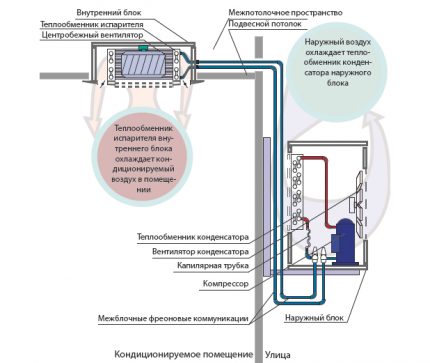
In addition to the pipeline, all modules are connected by a cable that provides power and control. It was this cable and pipeline connecting all the modules that got the name - air conditioning route.
How does the installation of the track begin?
It is best to start work on laying the communications of the air conditioner after purchasing equipment or at least after choosing the necessary model. The determining component of any route is the diameter of the tubes, which depends on the model.
In addition, each of the models of air conditioners has its own limit values along the length of the route.The maximum length of the air conditioner route when using household split wall-mounted systems does not exceed 20 meters. This does not mean that the system will not function. Simply, if the threshold is exceeded, the performance of the air conditioner can significantly decrease.
What you need to consider before laying the track?
It’s important to pinpoint the location before starting work. installation of cassette air conditioners, channel and multiblock systems, since it will be impossible to move the air conditioner even by a couple of centimeters.
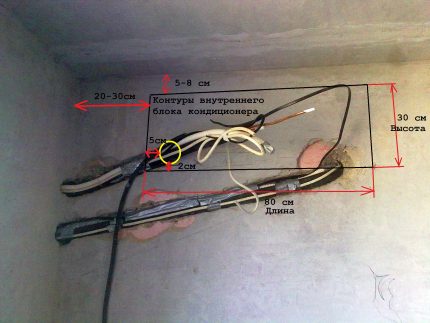
The outdoor unit should be positioned so that convenient access for cleaning and maintenance is provided without the use of special equipment.
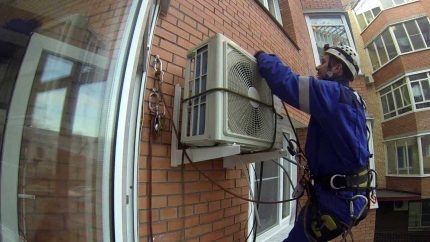
The power of the air conditioner puts a significant load on electrical communications, therefore it is recommended to lay a separate supply line with its own circuit breaker. Before starting tracing, it is necessary to select the most optimal location for installing the indoor unit and calculate the length of the trunk.
When placing equipment, the following features should be considered:
- You can not go beyond the placement of indoor and outdoor units in height. For household appliances, this figure is in the range of 7-12 meters.
- When laying drainage, it is necessary to maintain the angle of inclination so that condensate flows freely into the sewer. This requirement can be neglected if the drainage system is equipped with a pump, during which the condensate is simply pushed out.
- The distance from the ceiling to the top of the indoor unit must be at least 10 cm. This space is necessary to ensure normal air circulation.
- Even before installing the air conditioner, it is necessary to provide for the arrangement of furniture, since the flow of cold air should not be directed directly at people.
- Do not place equipment directly above the bedroom bed, as the air conditioner cannot operate completely silently.
Taking into account all the above features, you can proceed with laying the trunk and carrying out installation work.
Work sequence
Lack of skills to carry out work is not a reason to refuse to lay the track on your own. Knowing the principle of operation of the equipment, and having a set of tools in the arsenal, you can easily install the air conditioner yourself.
In addition to equipment, the following materials will be required:
- Copper tubes of appropriate diameter with brass nuts;
- Thermal insulation material;
- Sealant.
Protective equipment will not interfere, since when ditching the walls, even when using a household vacuum cleaner, there will be a lot of dust. And when filling the air conditioner with a refrigerant, it can leak, which can negatively affect the respiratory system.
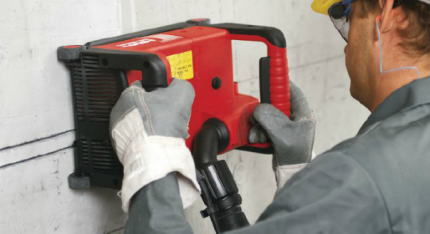
The preparatory stage is most important, since it is at this stage that it is necessary to correctly orient the placement of blocks and elements of the route.
The work is carried out in the following order:
- Marking on the wall of the location of the indoor unit;
- Marking the strob in the walls, taking into account slopes;
- Strobing holes in the walls;
- Installation of refrigerant pipes;
- Drain pipe laying
- Electric cable routing and installation AC outlets;
- Strobing holes in the wall to connect the indoor unit.
This order of work is the most complicated, but at the same time it is considered the most practical, as it allows you to maintain a decent aesthetic appearance of the room. Pipes to the indoor unit are mounted in the wall and go behind, only one plastic panel remains in sight.
It must be borne in mind that the strobing method is more labor-intensive and expensive.
The choice of route device
There are two ways to bookmark a route for a split system - installing communications in walls or ducts.
Installation in the box has several advantages:
- Decrease in labor input. Fixing the box on the wall is much easier and faster than performing the chipping.
- Lack of dust. When working with a grinder or a chaser, it is impossible to avoid dusting the room.
- Speed of work. It is possible to drill holes and fix the box in just a couple of hours, but the track can be drilled more than one day, if we are talking about installing several split systems and significantly removing them from the external unit.
At first, it may seem that the box device looks preferable. However, in fact, all these advantages outweigh the disadvantages that cannot be neglected.
Significant minuses consider that:
- The drainage line must be inclined towards the drain not less than 3 degrees. At a standard height of 3 m, the slope should already be at least 9 cm, and such a skew will be too striking, violating the aesthetic appearance of the room.
- One box is indispensable. The pipe and electric cable must be hidden by separate boxes placed parallel to each other. Thus, part of the wall will be occupied, which complicates the solution of issues during cosmetic repairs, the use of hinged furniture and decor elements.
- If necessary, drainage into the sewer system will have to be routed through all rooms of the apartment or house.
After considering all the weaknesses of each method, it becomes obvious that the flaws of the hidden installation are not so significant.
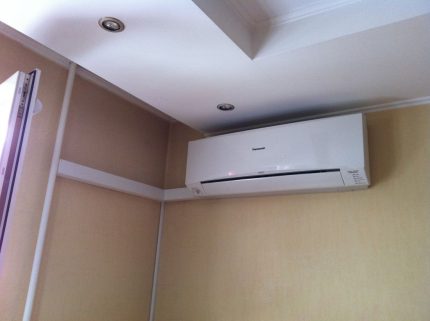
With the high-quality performance of pipe laying and compliance with the rules, you don’t have to worry about violating the integrity of the system and the need for repairs.
Air conditioning track construction
The first stage of the installation of the route for connecting the split system to the external unit is the marking of the gate. It can be performed in various ways.
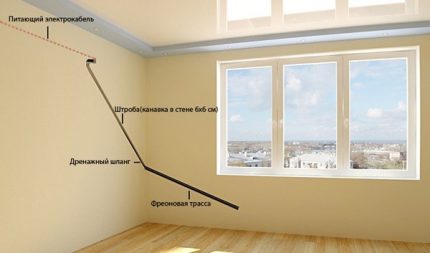
When marking, it is necessary to take into account the location of other communications in order to avoid possible intersection or damage.
Strobing procedure
The method of marking the gate depends on the features of the drainage system and the place of condensate drain:
- With a parallel arrangement of the drainage and freon pipes, the recess should be done with a slope of at least 3 degrees to prevent condensation stagnation.
- If the drainage pipe is located separately with condensate drainage into the sewer system, then a slope is required only for the drainage device. The refrigerant line can be positioned without slopes and placed both on the wall and on the ceiling.
- In the absence of the possibility of realizing the movement of condensate by the gravitational method, it is necessary to ensure the installation of additional pumping equipment.
After drilling holes in the wall to connect the track to installed outdoor unit you can start marking the route, moving from the hole in the wall to the lower corner of the block located indoors. When cornering, sharp bends should be avoided. The slope is best maintained constant throughout the line.
To ensure an even groove in the wall, it is better to cut through the edges before starting the chipping with an angle grinder.After that, you can perform the gating with a punch.
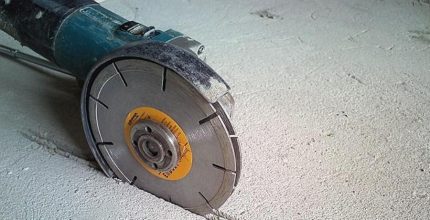
Usually it’s enough to make a stroba with a depth of 6 cm. If necessary, you can reduce the depth by half, but expand the stroba to 8 cm. In this case, the communications will be laid in a furrow not in depth, but in width.
Calculation of required materials
For household appliances with a power of up to 3 kW, depending on the model, copper pipes are used to arrange the air conditioner path with a diameter of 1/4 or 3/8 inch, which corresponds to 6 and 10 mm.
When calculating the length of the tube, one should take into account the distance under the indoor unit about half a meter, the thickness of the walls, the length of the strobes, the distance outside the wall to the cranes of the unit. The length of the pipe outside is also better to make at least half a meter to ensure smooth bending.
The size of the electric cable is calculated in a similar way. The only difference is that the length under the indoor unit is about 1.2 m, and the length on the outside is 0.2-0.3 m longer than the pipes. It will not be superfluous to provide for the laying of an additional cable, which can be used to connect additional sensors.
For the installation of the drainage line, it is preferable to use a corrugated hose with a diameter of 16 mm. The length calculation is similar to calculating the length of the pipeline, taking into account the length under the indoor unit of about 0.5 m, the length on the street is about 1.2 m.
Features of mounting the track
It is best to start laying the track from the edge that goes onto the street. We form a bundle of tubes and electric cables, put a flex on it and wind it with tape on that part of the length that will pass through the wall. This is necessary to prevent damage to the insulation.
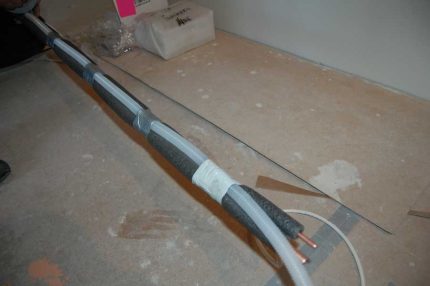
After that, the harness must be dragged through the wall, taking into account the length of the outer part, calculated earlier.
Further, all materials must be laid in the gate, observing the following rules:
- The drainage hose should be inclined along the entire length of the route;
- The drainage should be located to the left of the tubes at the outlet of the gate when connected to the indoor unit;
- Copper tubes up to 10 mm in diameter can be gently bent manually. For pipes of larger diameter, a pipe bender must be used.
- The track laid in the gate must be secured with a mounting tape and fixed with dowels. It is necessary to control that communications do not extend beyond the strobe, as this can cause difficulties during the finishing work.
- To test the route, it is advisable to pressure test the system - injection from a cylinder of nitrogen under pressure. This will help verify the integrity of the system and the tightness of the installation.
After pressure testing, it is necessary to remove residual liquids from the system and you can connect the units and charge the refrigerant.
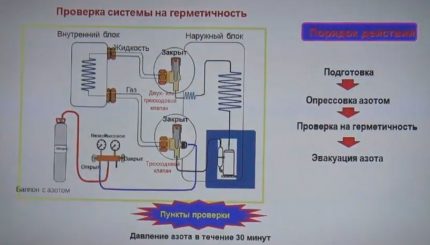
After checking the operation of the system, you can begin to close the strobes with a building mixture.
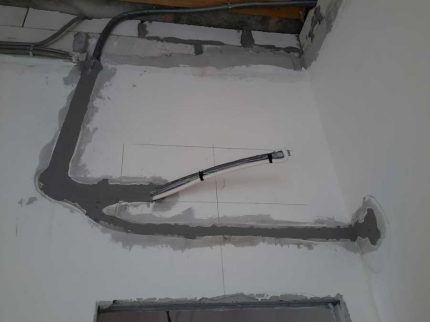
The mortar must be selected depending on the material of the walls. Cement-based mixes are ideal for brick and concrete walls. With the choice of the optimal time for installing the air conditioner next article, which we advise all potential buyers of equipment to read.
Conclusions and useful video on the topic
Rules for laying the air conditioning track, materials and equipment necessary for the work:
Laying the air conditioner route is a very important event, since the performance and durability of the operation of climatic equipment largely depend on the correctness of the work. Most of the work is quite possible to do with your own hands, this does not require any special skills and special equipment.
If you go further, you can independently test and refuel the system, but here you already need to carefully think over and decide whether to spend money on the purchase of additional equipment or to resort to the services of installers.
But the cost savings will be obvious anyway, because laying a route is a rather expensive undertaking, especially if you are using gating and pipes hide in the walls.
Do you want to share your own experience gained during the construction of the air conditioning circuit? Do you have useful information on the topic of the article, which is worth sharing with visitors to the site? Write comments, please, in the block below, post photos and ask questions about the topic of the article.

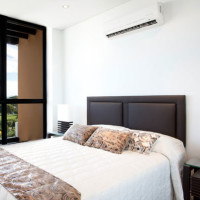 Where to get the air conditioning water drain: norms and options for the drainage system for a split system
Where to get the air conditioning water drain: norms and options for the drainage system for a split system 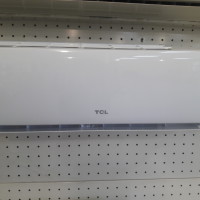 Errors of TCL conditioners: specifics of decryption of a code of a malfunction and a way of repair
Errors of TCL conditioners: specifics of decryption of a code of a malfunction and a way of repair 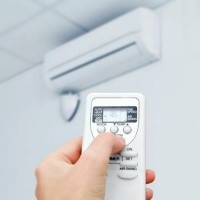 Gree air conditioner error codes: how to decipher the fault symbol and repair the unit
Gree air conditioner error codes: how to decipher the fault symbol and repair the unit 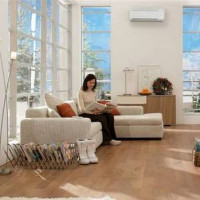 How to turn on the air conditioner for heating: the specifics of setting the system to heat
How to turn on the air conditioner for heating: the specifics of setting the system to heat 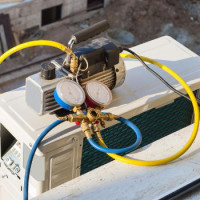 Do-it-yourself evacuation of the air conditioner: technology for work + valuable recommendations
Do-it-yourself evacuation of the air conditioner: technology for work + valuable recommendations 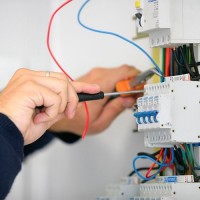 Which automatic machine to put on an air conditioner in an apartment: selection, installation and connection of a protective device
Which automatic machine to put on an air conditioner in an apartment: selection, installation and connection of a protective device  How much does it cost to connect gas to a private house: the price of organizing gas supply
How much does it cost to connect gas to a private house: the price of organizing gas supply  The best washing machines with dryer: model rating and customer tips
The best washing machines with dryer: model rating and customer tips  What is the color temperature of light and the nuances of choosing the temperature of the lamps to suit your needs
What is the color temperature of light and the nuances of choosing the temperature of the lamps to suit your needs  Replacement of a geyser in an apartment: replacement paperwork + basic norms and requirements
Replacement of a geyser in an apartment: replacement paperwork + basic norms and requirements